
Home |
About Us |
How to Participate |
Biodiversity Modules |
Projects |
Maps |
News |
Resources

Home |
About Us |
How to Participate |
Biodiversity Modules |
Projects |
Maps |
News |
Resources
|
Definition of "Conifer Forest" - General Code 900: Areas containing greater than 50% of trees, primarily conifer, as the primary vegetation. Note: Urban areas with a lot of large trees are not forests; use the developed code. |
Conifer Forest: Secondary Conifer Forest (972)
 | Descriptive Habitat Code: Conifer trees (9) intermediate in age (7), with closed canopy (1).
Secondary forest - A forest or woodland area which has re-grown after a major disturbance such as fire, insect infestation, timber harvest or wind throw. |
 American Black bear Ursus americanus Code: URAM Photo: Natures Pics | Distribution and
Habitat: It is found in mountainous, forested, and wetland habitats Diet: Interesting fact: |
 Cougar Puma concolor Code: FECO Photo: TFK |
Distribution and Habitat: Cougars range from northwestern Canada to Patagonia, South America. They make their dens in rocky outcroppings, dense thickets and under uprooted trees. Diet:
Interesting fact:
|
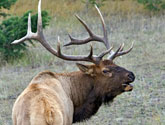 Elk Cervus elaphus Code: CEEL Photo: Natures Pics |
Distribution and Habitat: Elk are widespread in Washington and found in a variety of habitats such as shrub steppe, bunchgrass, shrub plant communities, open meadows near open or closed canopy forests. Diet:
Interesting fact:
|
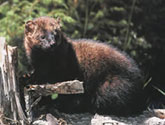 Fisher Martes pennanti Code: MAPE Photo: USFWS |
Distribution and Habitat: Fishers are found only in North America. They range from the Sierra Nevada of California to the Appalachians of West Virginia and Virginia. In western forests, fishers are found in late-successional conifer forests with a high percentage of canopy closure, abundant large woody debris, large snags and cavity trees, and understory vegetation. Diet:
Interesting fact:
|
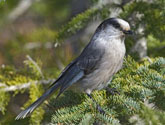 Gray Jay Perisoreus canadensis Code: PECA Photo: Natures Pics |
Distribution and Habitat: The Gray Jay is common in moderate and high elevation conifer forests throughout the state and locally at lower elevations in western Washington in coastal rain forests of the Olympic Peninsula. Diet:
Interesting fact:
|
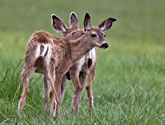 Mule Deer Odocoileus hemionus Code: ODHE Photo: Natures Pics |
Distribution and Habitat: Mule Deer are found throughout Washington, including the islands, in hardwood and coniferous forests, dense shrubs or other young successional stages with small trees or shrubs. Diet:
Interesting fact:
|
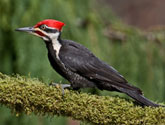 Pileated Woodpecker Dryocopus pileatus Code: DRPI Photo: Natures Pics |
Distribution and Habitat: The Pileated woodpecker can be found in open pine forests with large widely spaced older trees. They claim their territory by drumming on trees with its bill. They can be found in Canada and in western Washington all the way down to northern parts of California and most areas of the eastern United States. Diet:
Interesting fact:
|
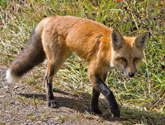 Red Fox Vulpes vulpes Code: VUVU Photo: Natures Pics |
Distribution and Habitat: In Washington, the Red Fox is indigenous in forests of the central and east Cascades and has been introduced in other parts of the state. Diet: Interesting
fact: |
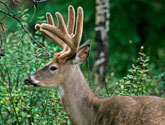 White-tailed Deer Odocoileus virginianus Code: ODVI Photo: Natures Pics |
Distribution and Habitat: White-tailed deer are found in North America from southern Canada through Central America. Deer prefer open woodland, but are often found on the fringes of urban areas and in farming country. Diet:
Interesting fact:
White-tails, particularly the young, are preyed upon by bobcats, mountain lions, coyotes, and wolves. |
Home |
About Us |
How to Participate |
Biodiversity Modules |
Projects |
Maps |
News |
Resources